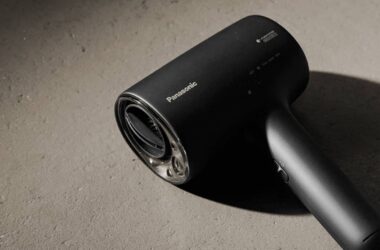At $5999, the Apple Vision Pro is out of reach for most people. Yet spend a short time with the headset and you just might look for ways to keep it in your life.
Since I was a kid, I’ve been interested in VR. It’s probably less an interest, and more an addiction to the idea of what virtual reality represents: immersion in worlds unseen.
When I was 12 or 13, I remember walking in the searing heat of the Texas sun where I grew up, sweating all the way to a local Blockbuster so I could rent something and spend time with Virtuality units and their mediocre resolution.
It was early VR so the experience wasn’t great, but it was the beginning. Technology clearly took some time to get to where it needed to be. 3D glasses for PCs were the beginning albeit often mediocre, acting as head-mounted displays where the vision stayed in the same place as you moved. The prices of these gadgets were so high, you’d be out of your mind to consider them.
In the past decade, however, VR technology has grown in leaps and bounds. There are portable options, less portable options, and professional options. You can use VR for work and play, and while most of the uses are entertainment based, developers are beginning to stretch what the category can do.
Spend enough, and you can integrate virtual reality in your life in unexpected ways. Play games in another world, watch movies with a big screen pressed right up to your face, and experience dimensionality in ways your computer only dreams of.
However, as great as VR headsets have been, they’re still not out of reach and inaccessible for most people. Not necessarily because of the price, but rather the reason. What do you even use one for? What’s the point?
Apple has been toying with this, working on a way to integrate virtual reality, augmented reality, and the apps you use to create something different, something special.
Running a version of something a little like iOS, visionOS is kind of like what happens when you find a way to make the iPad virtual, and yet not. It’s a totally different experience inside and out. And one that words can’t do justice, but we’ll try anyway.

This isn’t a review
This isn’t a review. Let me stress this again: what you’re reading isn’t a review. Pickr has methodologies for reviews, and while VR headsets aren’t yet covered, reviews take longer to write than the small amount of time we’ve spent with this one.
However, now that the Vision Pro is available in Australia, we can try it out, and the experience warrants writing it up like a review, so that’s what we’re doing here. This is hands-on first look, or even an eyes-on glimpse at what life is like behind the Vision Pro headset.
Simply put: what is life like inside Apple’s $6K Vision Pro headset?
Experiencing the Apple Vision Pro
Hold the headset at the bridge of the nose, don what looks like goggles, and tighten the straps into place. That’s how you wear the Vision Pro headset, which takes you into a guide to how to use the headset.
Use your eyes to control things by looking at items, selecting them with a gaze. Tap your forefinger and thumb together like the Apple Watch gesture and you’ll tap an item. Hold your fingers together and move them down or side-to-side to scroll in various directions.
These are the controls of the Vision Pro, and while they take a moment to get used to, they feel natural after a few minutes. They’re clever, intuitive, and feel very much like an extension of Apple’s research into accessibility controls.
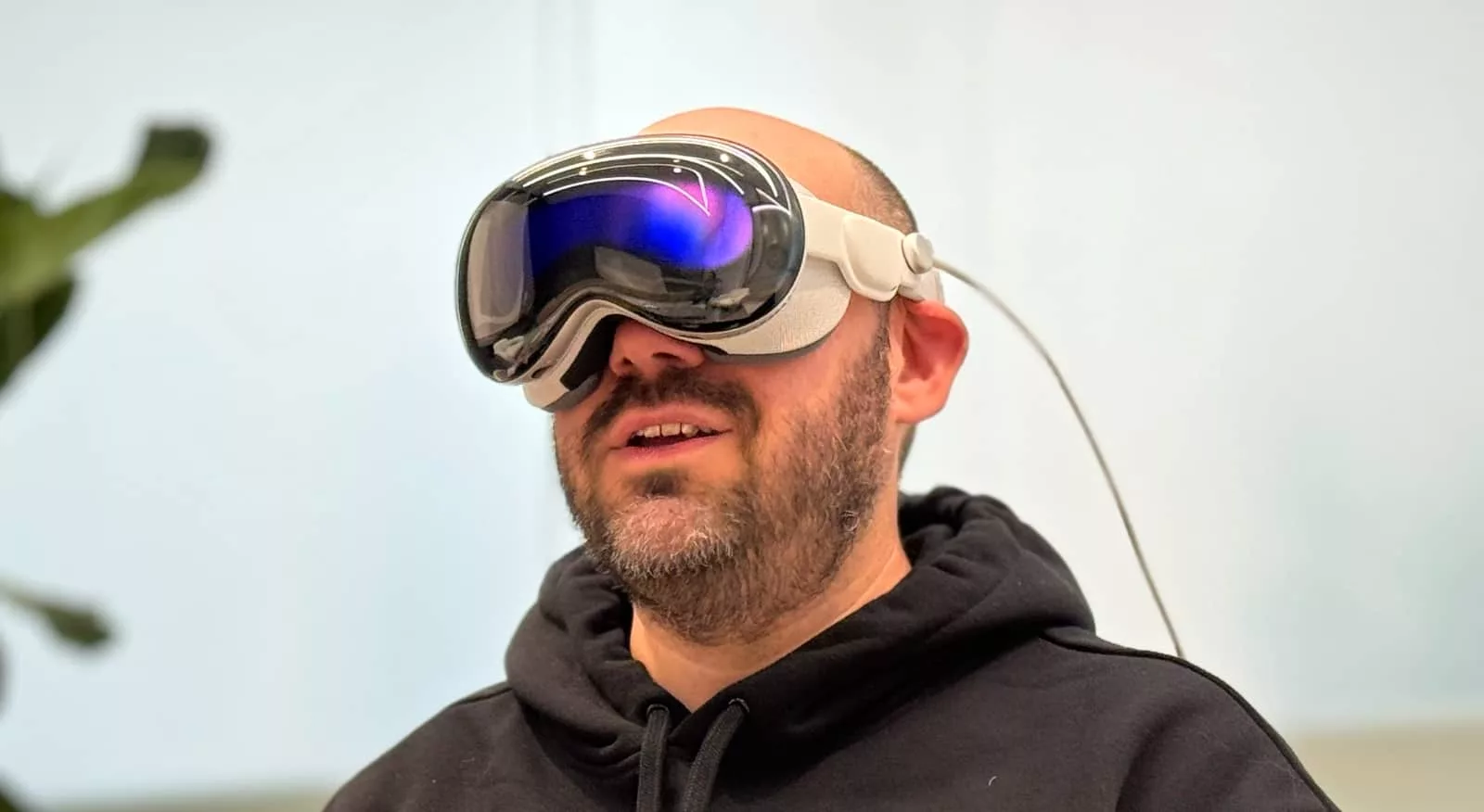
Once you’re familiar, you can get to playing with some of what makes the Vision Pro so clever: immersion.
Load a photo and zoom in. It’s big. It’s massive. It’s a billboard of your photo library, and you can swipe and zoom and control it in such a large way.
Now load up some photos and videos, and the scene darkens slightly. It’s like turning your memories into a personal and private cinema, and you’ve already captured them because they’re a part of your iPhone and iCloud library. Some of them might even be spatial, thanks in part to an update both the iPhone 15 Pro and 15 Pro Max received, allowing you to experience an almost three dimensional memory.
Of course, you can capture memories with the Vision Pro, which is a 3D camera, as well. These captures offer even more dimensionality, so much that you feel you can reach out and touch the memories.
The recreations are insanely real, as Apple not only uses a big screen on your eyes to immerse you in worlds seen and unseen, but also brings 3D back to the fore. Literally, even. Your memories in 3D, and even things that aren’t memories.
3D movies become a thing once again, allowing you to experience titles such as Avatar without the glasses, because Vision Pro is the glasses. We’ve not seen a 3D title or 3D TV for so long, and these have largely gone the way of the dodo, but they’re back in this form, much as we suggested VR might help with several years ago. They might even start appearing on the local iTunes Apple TV store.
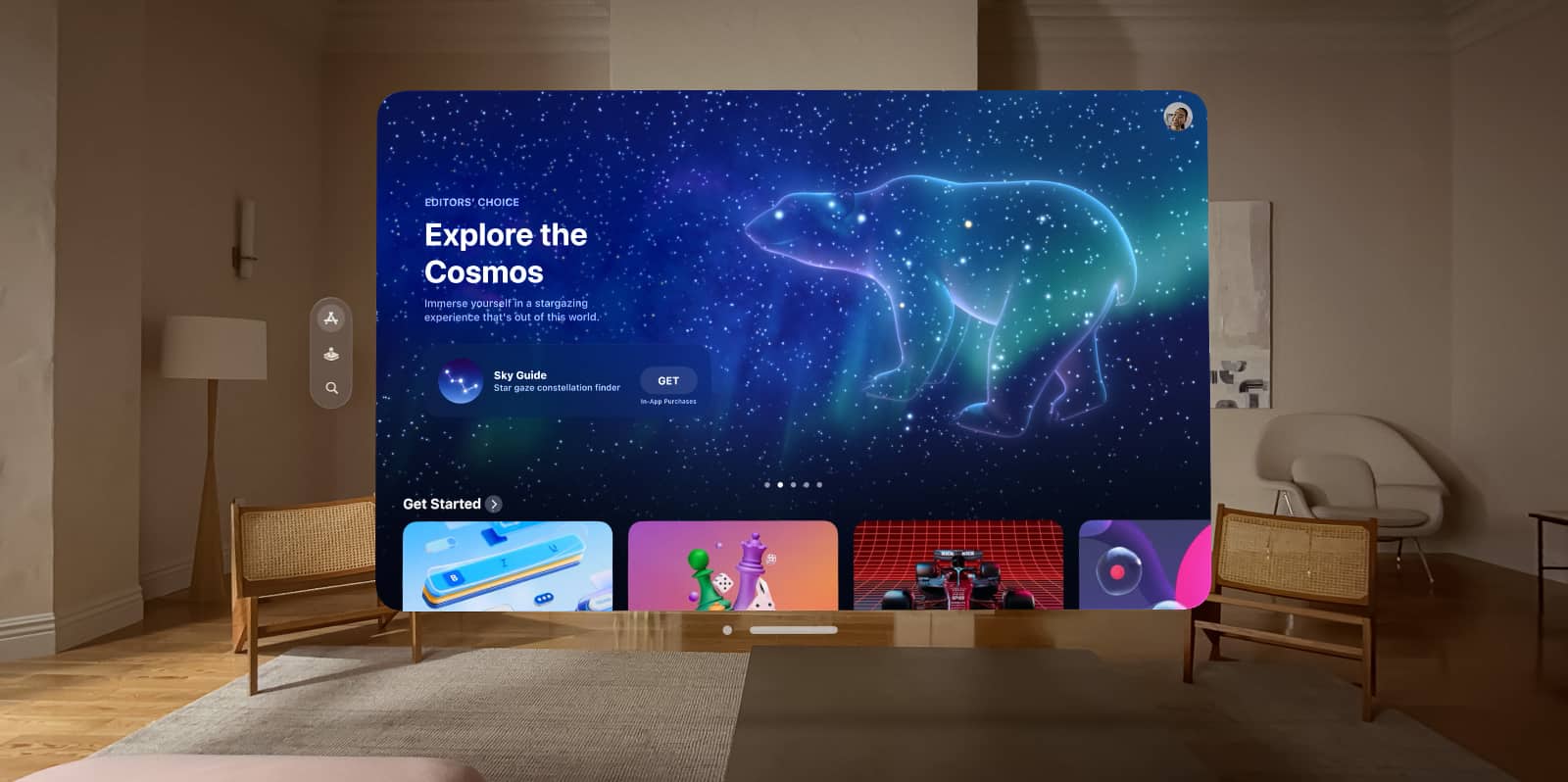
There’s more, too.
App developers are experimenting with how to make this experience more interesting. The NBA app allows you to place up to five basketball games at once in a grid in front, letting you watch several games almost like you would in a pub or a bar. All you need is peanuts, pretzels, and beer, and since you can see your own world, you might as well bring your own.
Use the Digital Crown up top to dial in different places to watch and play with apps, such as the edge of a volcano or a lovely beach. Or just leave it in your room and place these apps around you.
You might even want to watch some immersive video, which thrusts you into the action, be it centre stage at an intimate performance, inside a cheering locker room, or right on the side of the field watching a killer goal.
I don’t like sports, but I would watch sports in a Vision Pro. It’s that good.
Like an iPad and iPhone, it can also do other more productive things. It can load several windows in Safari, it can let you take notes, it can absorb your thoughts with the Mindfulness app, and it can let you play with iPhone apps and games that are compatible. It’s the world you already know made to fit your head, and offer you a new experience in the process.
The little things
Apple’s Vision Pro shouldn’t work as well as it does. You feel as though you have almost leapt from your body and are experiencing more.
The fact that it delivers an almost transcendental experience is impressive. I don’t think I’ve been this stunned with a technological application in so long, and I’ve been writing about the cutting edge for 17 years.
When your world inside that headset opens up to reveal a space on top of a mountain or even the Moon (or admittedly the set of For All Mankind), and you realise you can work in that space, it changes things.
Aspects of what the Apple Vision Pro delivers can be a little on the gimmicky side. The spatial images are clever, making panoramic imagery and video that much better overall, but still a bit of a gimmick. We’re not sure you’d use them regularly. Apple’s Immersive Video looks intriguing, but like other 3D video experiences, whether you end up finding video you want to watch makes us question if it’s a small part of owning one or something deeper.
Really, it’s the little things that shine through.
Things like the gestures and touches. You’re not holding a physical controller, but your gestures work anywhere, whether in front of you or at your side. You can push and type on a virtual keyboard as if it were real, and your eyes are the controller.
Some of these aspects work better than others; we found ourselves accidentally pulling on items more than we intended, but suspect it’s a growing pain we’d learn to correct.
But it’s those little things.
Things like knowing you can hold your hand out in space and have in-screen items feel like they can connect with them. Things like having the environment change for movies, and having that directly impact the sound or even what goes on in the background.
You can look down and see your real hands, not a recreation of them, almost as if the world around you was green-screened, and your hands were super-imposed above it all. It is staggering.
Watch a movie on Disney+ in the set of The Avengers building (this writer is a Stark, so it only made sense), and the setup changes: New York goes from day to night, traffic is moving in the background, and Iron Man’s mask is lit up. The movie is pitched over the city just like a superhero would want to watch it, and when the movie is over (or even the trailer), daylight returns and you can look at all the little details around you: Shawarma bag, notes on a napkin, and phone to Nick Fury and all. Just try reaching for Thor’s hammer. You’re not strong enough, and also it’s not really there.
But it’s like being there, and those little things keep you there.
Some of those little things are hugely impactful.
Seven years ago, I wrote for the Australian Financial Review about how virtual reality would allow you to create an endless supply of desktops, affording you the biggest virtual space to work in. It didn’t quite work well back then, but inside visionOS, things are definitely better.
In Vision Pro today, you can move several windows over in places around you. Set them up here, there, anywhere, and then change the world in which you work in. Work from anywhere, and if someone comes in and talks to you, an apparition appears and gradually fades into view so you know you’re not talking to a ghost, but a real and legitimate person. And then escape back to your virtual world, and get on with it.
The little things make the biggest difference inside Vision Pro.
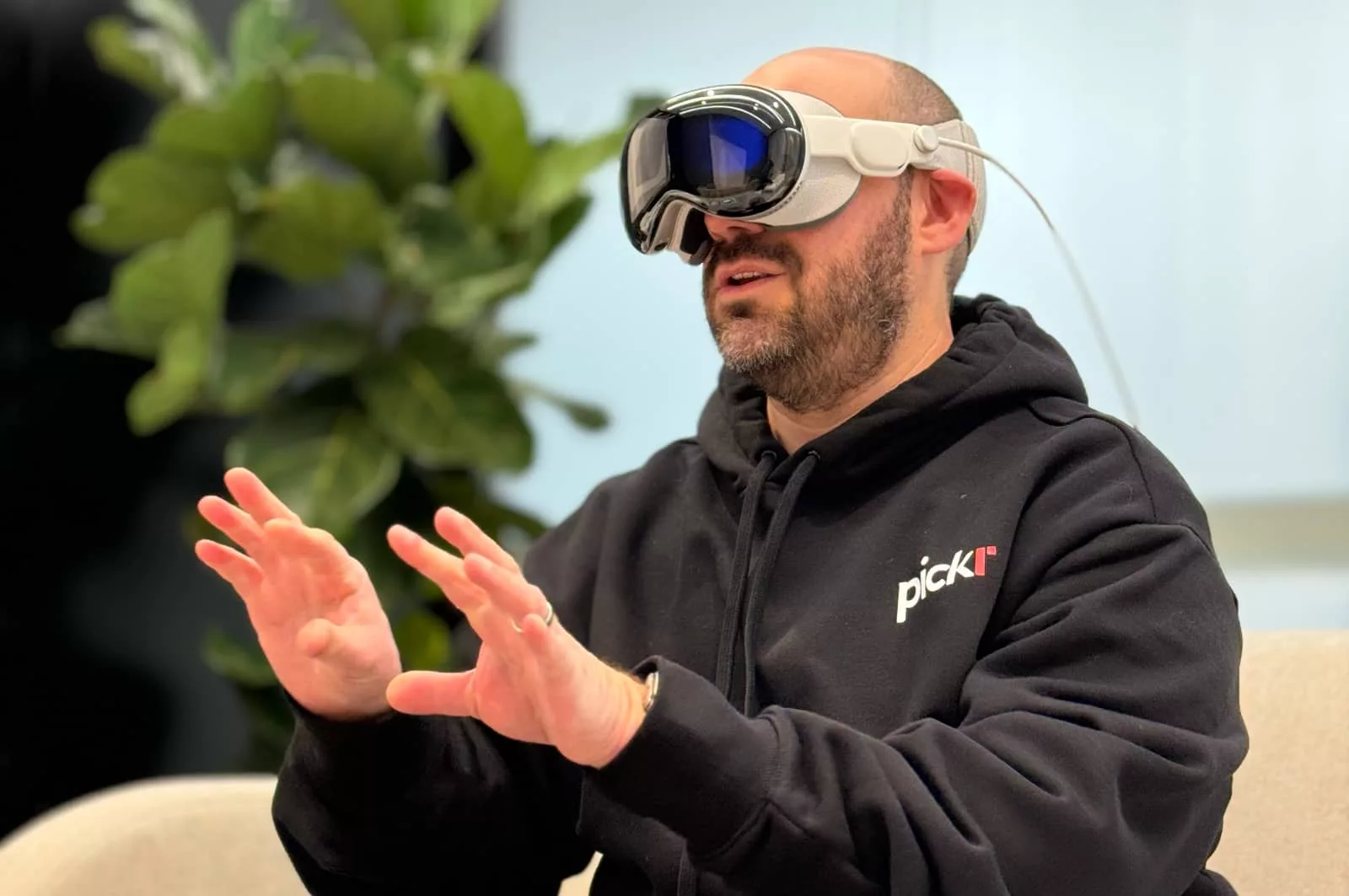
The cost of cutting edge
Unfortunately, the cost is a big consideration, with Apple’s Vision Pro commanding a $6K price in Australia. That is no small amount of coin, and it may well be too cutting edge for anyone.
Indeed, this is the first generation, and it will not only get better from here, but it will also come down in price eventually.
I can’t recall the last time I was this impressed with a technology demo from a company. Aspects can really take your breath away. You’ll come out of it with questions, some of which will be about money.
How much is a kidney worth? Do I really need two? Is there a Vision Pro-kidney trade-in program?
Questions and uses
Alternatively, some better questions include “does the Apple Vision Pro have uses beyond the gimmick?”
Even from a short experience, I think the answer is yes, but it’s going to come from developers who really work out how to flex this hardware and the experiences on offer.
For instance, you could totally edit spreadsheets in it, and you could even budget inside a virtual environment, but there are probably better uses.
Entertainment is the obvious one, but education is another entirely. You don’t just have to watch a video, but can experience a spatially aware experience, going from entertainment to immersion with interactive properties. It’s the next level of edutainment, for sure.
I’m reminded of Walt Disney Imagineers, the people who go about and make the rides at Disney theme parks more than mere rides. They put the effort into going above and beyond for theme park technologies, and even for the set decoration as you line up and wait to experience that adventure.
Some attractions even venture into the personal: by creating endings that can vary by shuffling, attendees are given a more personal experience, making them want to come back for more.
Explore Encounters Dinosaurs is a perfect example of this. A dinosaur demo of sorts, this app allows you to take a peek into a portal of the cretaceous period, and try to call a dinosaur over. The demo changes based on what you do, and the endings can be different. You may not be eaten, but you might just push a dinosaur back, making for a unique approach to education.
I know my seven year old daughter would love to see how that works, but that raises another question: can the family enjoy Vision Pro?
Can kids and the family try Vision Pro?
If you’ve spent $6K on a VR headset, it only makes sense that you’d want the share the experience. The problem is this headset only works with adults.
While the Vision Pro headset needs a step to be configured to your head, there are some rough things about all heads that are similar: namely the size. An adult-sized head is what the Apple Vision Pro is made for, with teens and pre-teens just managing to squeeze in there.
Officially, the Apple Vision Pro is built to work with people aged 13 and above. That means some people in your family could try it, but others might not, and the headset and strap configuration are set up based on one person: the owner. Keep that in mind when trying to pass a headset to someone else.
Will you look crazy when wearing it?
Another consideration comes down to aesthetics, especially if you value what others think about you.
Wear this in public, and you just might. I’ve worn some crazy headphones before, but the Vision Pro might attract a lot of stares, and since you can see through the headset with cameras, you’ll be able to see them staring back.
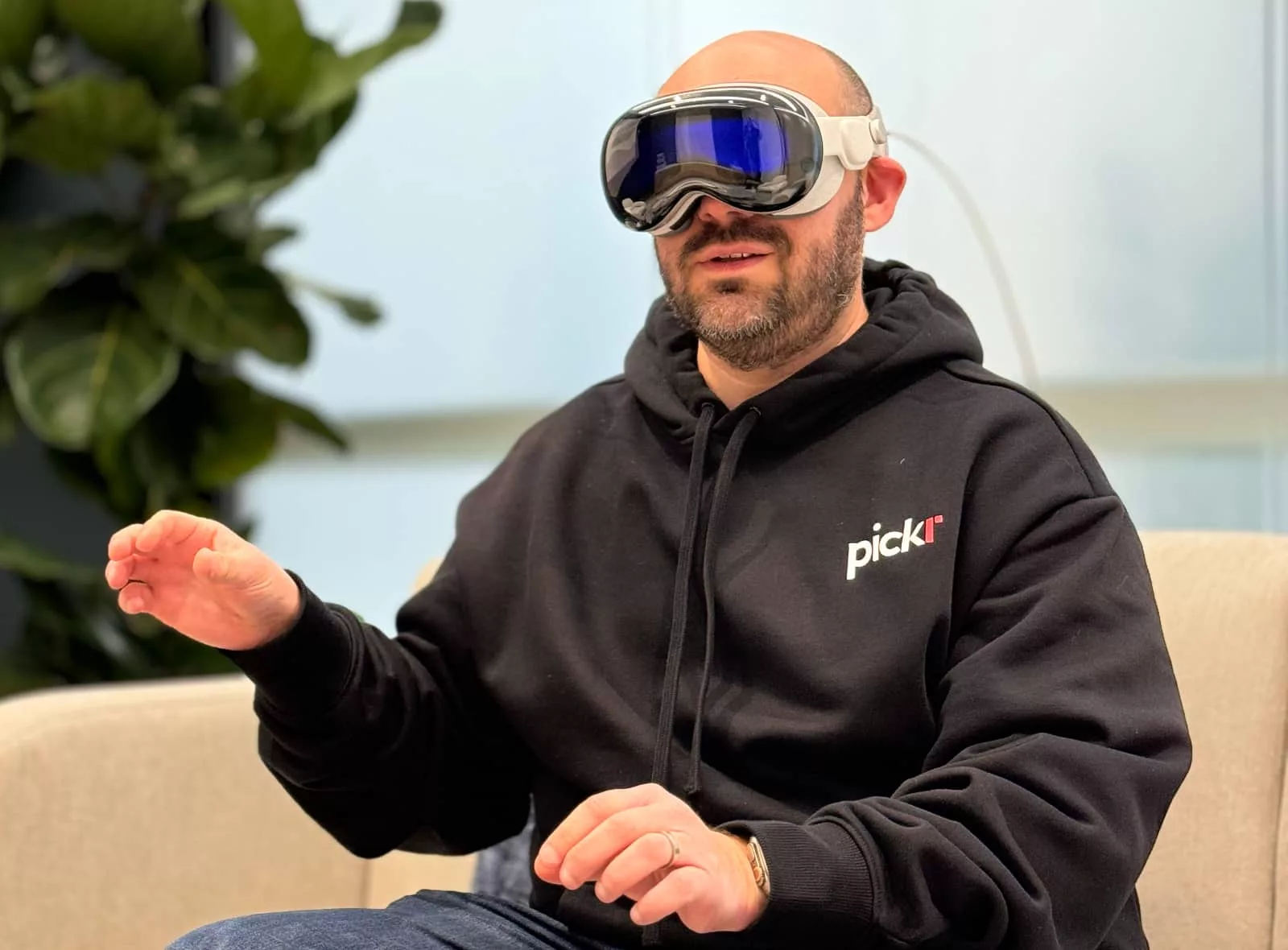
Can I justify $6K now?
The biggest question still comes back to money: can you justify spending as much as the Vision Pro is?
If you have to ask, you probably can’t. Most people probably can’t, at least not yet. This is like trying to justify any other expensive item, like a Leica or something else pricey and out of reach.
The good news is that Apple is rumoured to be working on a less expensive Vision Pro, but the bad news is it mightn’t come until the end of 2025. And it still comes with another question: how much “less expensive” will the less expensive Vision Pro be? Our guess is it will still be fairly high in price, even if it’s not quite the $5999 Apple’s Vision Pro costs in Australia today.
If you can wait, you might save some money, and the developer ecosystem will likely improve considerably, too. Wait long enough and app makers will have worked out how to get the most out of Apple’s spatial revolution.
But if you want it now, be prepared to spend up. Before you do, head over to an Apple Store to try it for yourself, and see if our words did it justice. We’re not sure they will, but the experience could leave you looking for a way to make that money fast. A kidney probably isn’t the answer, either.





